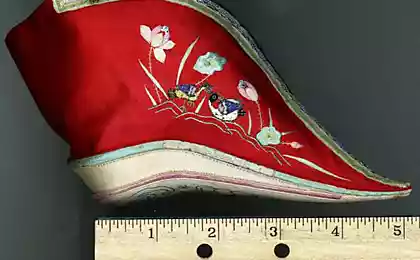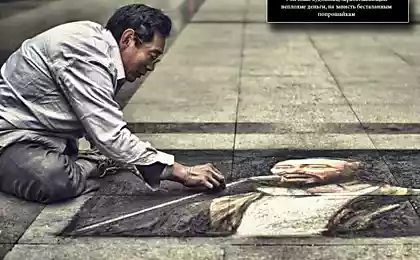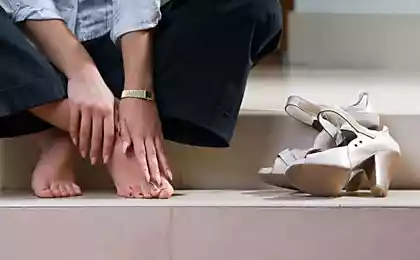1618
Foot-binding in China

custom of bandaging legs Chinese girl, similar to the methods comprachicos seems to many like: children's foot tape up, and it just does not grow, while remaining the same size and the same shape. It is not well there were special techniques and special foot is deformed in a particular way.
The ideal beauty in ancient China was to have nozhki- like lotuses, mincing gait and swaying like a willow, figurku.

In old China, the girls began to bandage his legs from 4-5 years of age (infants are not yet able to endure the torments of tight bandages, mutilating their feet). As a result of these tortures somewhere in the 10 years of the girls was formed about 10-centimeter "Lotus leg." Then they began to learn the proper "adult" gait. And in 2-3 years they were ready to girls' marriageable ».
Dimensions "Lotus feet" has become an important condition for marriage. Bride with big feet were ridiculed and humiliated, as were similar to the women of the common people, who worked in the fields and could not afford the luxury of bandaging nog.

In different regions of China were fashionable different forms of "lotus feet". In some places they preferred narrower legs, and in others - shorter and miniature. It was different shapes, materials and decorative subjects and styles "lotus shoes».
How intimate, but flaunted part of female attire, these shoes are a measure of status, wealth and personal taste of their owners. Today, the custom of foot-binding seems to be a wild thing of the past and a way of discrimination against women. But, in fact, the majority of women in old China were proud of their "lotus feet» .
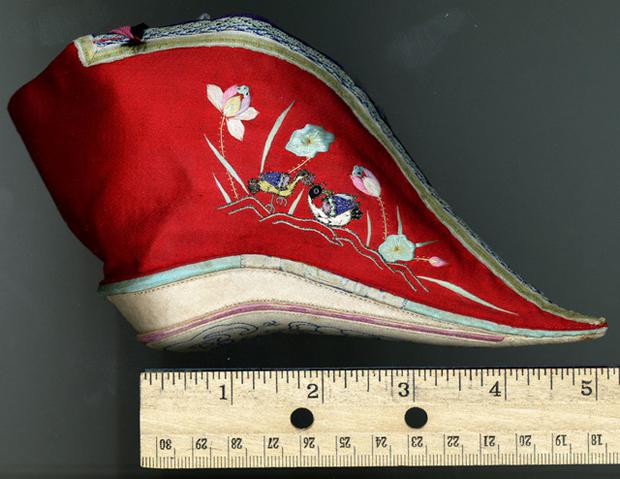
The origins of the Chinese "foot-binding," as the tradition of Chinese culture as a whole, back to the ancient times, from the X century.
Institute "foot-binding" was regarded as a necessary and wonderful and practiced ten centuries. However, the rare attempts to "liberate" the foot is still made, but opposed the ceremony were "outsiders." "Foot binding" has become part of the general psychology and popular culture.
In preparation for marriage the groom's parents initially asked about the foot of the bride, and only then on her face. The foot was considered its main human quality. During the process of bandaging the mother comforted her daughters by drawing them dazzling prospects of marriage, depended on beauty bandaged nogi.
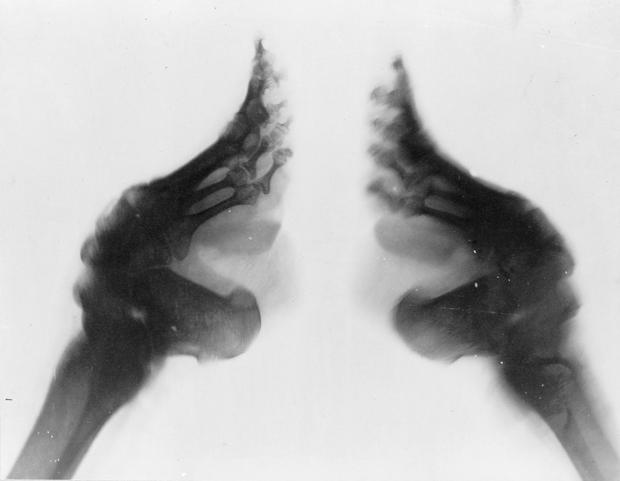
Women who have not undergone the rite of "foot-binding," evoked horror and disgust. They get cursed, despised and insulted them. That's what the man said on the "bandaged" and normal legs: tiny leg shows a woman of integrity ...
Women who have not undergone the rite of "foot-binding," look like a man, as a tiny foot and is a sign of distinction ...
The tiny foot is soft, and touching it is extremely concerned about ...
A graceful gait provides the observer with a mixed feeling of suffering and self-pity ...
Going to bed, holders of natural feet clumsy and heavy, and tiny feet gently penetrate the veil ...
Woman with big feet does not care about the charm and the owner of tiny legs often wash them and use incense to charm everyone in their vicinity ...
When walking, the natural shape of the foot looks much less aesthetically pleasing ...
All welcome the tiny size of the feet, it is considered precious ...
Men are so coveted her that owners of tiny feet accompanied the harmonious marriage ...
Tiny feet make it possible to fully experience the diversity of pleasures and love feelings ...

Elegant, small, curved, soft, fragrant, mild, easily excitable, passive to almost complete immobility - such was a woman with a "bandaged feet." Even the images reflected in the names of various forms of the foot, it is assumed the one hand, women's weakness (lotus, lily, bamboo shoots, Chinese chestnut), and on the other - masculine independence, strength and quickness (crows with huge paws, foot monkey). These masculine traits were unacceptable for women.
Source: thebestjapanforum.gip-gip.com/t589-topic
